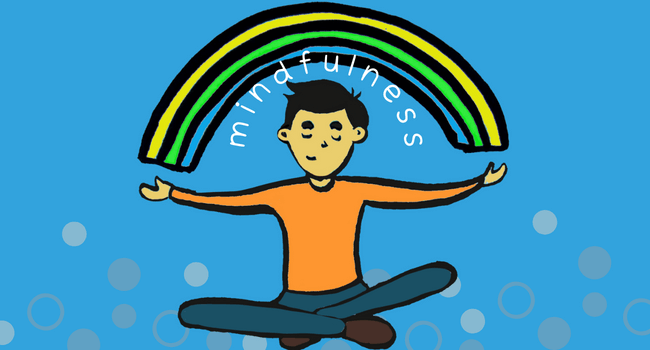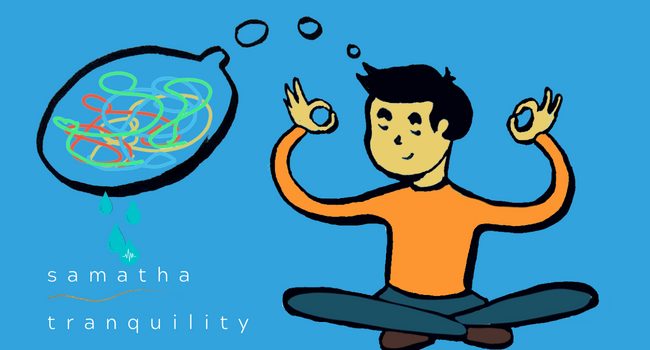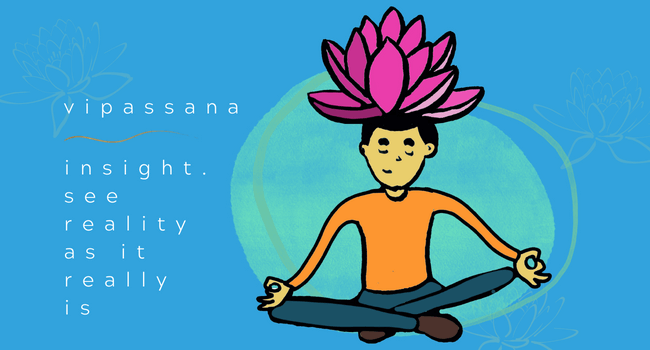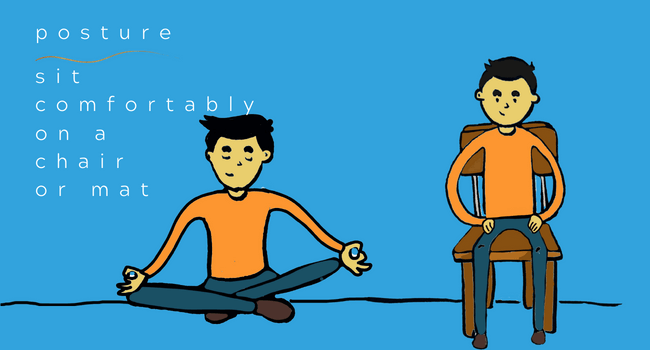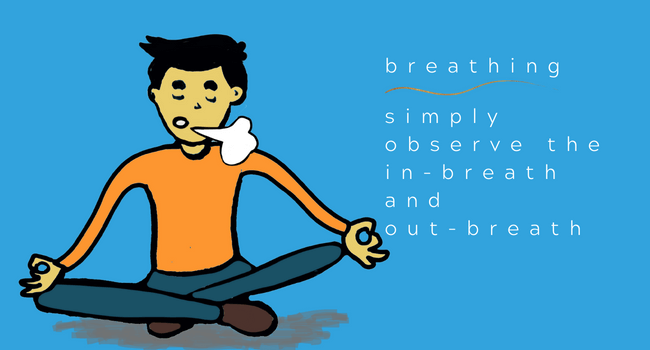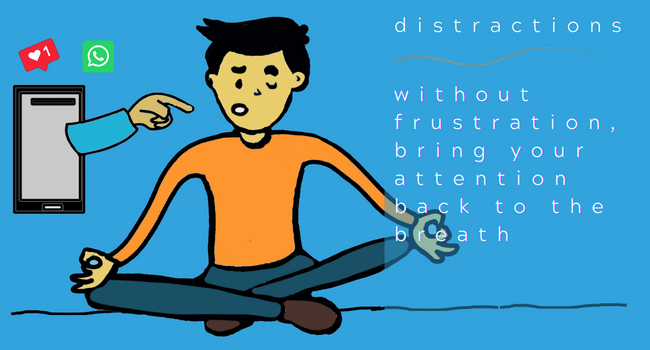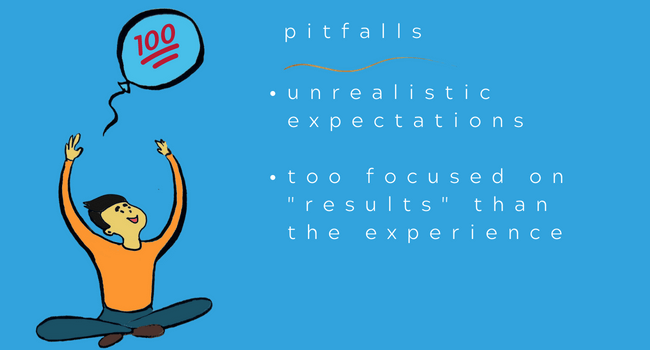In 2017, my startup was not doing well — it was guzzling cash and at that rate, we would not survive long. Unsurprisingly, I was going through nerve-wracking stress. I was looking for some solution, and like most people, I stumbled upon meditation. Because I had little guidance, I started and quit many times before I could finally make the meditation habit stick.
However, despite all the struggles, the journey to build the meditation habit has been totally worthwhile.
Today, I would like to give you a complete guide on meditation for beginners. This is the kind of guide that I wish I had access to when I started. I will tell you what you need to know to get started and sustain this habit.
What is meditation?
Let me start by asking, ‘What is mindfulness?’
Mindfulness is deliberately paying attention to the present moment without judgment. Let me illustrate. If you are eating your lunch, mindfulness is paying attention to the taste, smell, and texture of your food. As opposed to that, mindlessness would be daydreaming or not being mentally present when eating that lunch.
While one can be mindful during any activity, meditation is a formal practice of mindfulness. In meditation, we give our full attention to a chosen object, which could be our breath, a mantra, a physical object, or even a mental object (e.g., a visualization). E.g., you could sit and keenly observe the sensations of each breath.
In simple words, meditation is just paying attention to what is happening in the present moment. It is a simple idea, which we make unnecessarily complicated.
You might have heard people saying things like, “When I am painting, I get into a meditative state.” And they are not wrong — if they are being totally absorbed in the painting process, they are being mindful. And meditation is nothing but a formal practice to inculcate mindfulness.
And that brings us to the next question — what are the different types of meditation?
Meditation techniques
There are hundreds of meditation techniques, which can really confuse a beginner. So I am going to distill it down for you.
Since a majority of meditation techniques have come from Buddhist traditions, let us look at the techniques from one of the oldest traditions in Buddhism — Theravada Buddhism.
In the Theravada practices, there are two categories of meditation:
1. Samatha meditation
It aims to create calm and tranquility, and includes the following techniques:
-
- Mindfulness of breath (‘Anapanasati’)
- Loving-kindness meditation (‘Metta’)
- Compassion meditation (‘Karuna’)
- Equanimity meditation (‘Upekkha’)
- Appreciative joy meditation (‘Mudita’)
2. Vipassana meditation
Also called ‘Insight meditation’, Vipassana’s goal is to help us see reality as it really is and free us from the clutches of desire and aversion. It helps intuitively understand the impermanence of life. Some of the well-known techniques are:
- Scanning body sensations, popularized in India by Shri SN Goenka, who in turn learned it from U Ba Khin, in Burma. This is popularly known as body scan meditation.
- Bare awareness — in this technique, you become non-judgmentally aware of anything that comes into the spotlight of your attention.
In addition to Theravada Buddhism, there are many other traditions in Buddhism which have their own types of meditation such as Zen, Dzogchen, etc. And not just Buddhism, but nearly every religion has its meditation and mindfulness practices, including Hinduism, Christianity, Sufi Islam, and Judaism.
Furthermore, even individuals have created their own variants such as Transcendental Meditation (TM), created by Mahesh Yogi. In TM, you silently repeat a mantra given to you by a teacher (it could even be a meaningless word), while paying full attention to it. It is similar to other mantra-based meditation practices.
There is also walking meditation, where you pay attention to each step while walking. In walking meditation, you observe the movement of your feet and become aware of how your body connects to earth.
To simplify all this, I recommend getting started with ‘mindfulness of breath.’ Once you have some practice with it, you can start doing loving-kindness meditation and Vipassana.
Please do remember that even though most meditation practices have originated in religion, meditation is a completely secular practice and has nothing to do with religious belief. Meditation is nothing but mind-training.
Benefits of meditation
In Buddhist traditions, the goal of meditation is nothing less than the complete liberation of the mind. But we often have more grounded reasons for learning meditation such as stress reduction, handling difficult emotions, and cultivating peace of mind.
So here are some benefits of meditation from my experience:
1. Stress reduction
When we are in a stressful situation, our mind is caught up in a cycle of rumination. The wandering mind picks up things from our past or starts worrying about what might go wrong in the future. Meditation takes our attention away from these anxiety-inducing thoughts to the object of our attention (e.g., the breath). It calms our minds and reduces mind-wandering.
It is so effective that there is a popular meditation-based program for reducing stress called Mindfulness-Based Stress Reduction (MBSR), pioneered by Jon Kabat-Zinn. MBSR is now globally recognized and has benefitted tens of thousands of people.
2. Improving mental health
From my experience, regular meditation is extremely effective in lowering anxiety. Hence it can immensely help with anxiety disorders.
Furthermore, since prolonged stress and anxiety can cause depression, mindfulness meditation can help prevent depression relapse and improve mental health. [1]
However, if anyone is suffering from severe depression, especially borderline personality disorder or schizophrenia, they should consult their doctor before commencing a meditation practice.
3. Improve sleep quality
Research suggests that anxiety prevents us from falling asleep. Hence, by reducing stress and anxiety, meditation helps by calming our minds and allowing us to sleep better.
4. Handling negative emotions
Whenever we are grappling with anger or other negative emotions, meditation can make us aware of how these emotions manifest in our body, e.g., via increased heart rate, tightening of muscles, etc. By observing these physical manifestations, we can allow our body to relax and with that, these emotions will dissolve on their own.
Hence, meditation is a great way to create self-awareness and handle negative emotions.
5. Building focus
Mindfulness meditation, especially ‘mindfulness of breath,’ trains us in building single-pointed concentration. That strengthens our focus muscle and the ability to concentrate.

Become A Morning Person Bootcamp
For calm mornings with a daily meditation & journaling routine
The meditation practice
Now let us talk about getting started.
I recommend starting off with mindfulness meditation — more specifically, ‘mindfulness of breath’, for which my guidance is as follows:
Posture
Most beginners, when they get started, are not sure what posture to adopt for meditation.
Traditionally, meditators used to sit in full-lotus or half-lotus postures but in today’s age, most of us may not be comfortable with those postures. I have often seen people sitting in full-lotus (‘padmasana’) and they are so uncomfortable that they are squirming all the time. It is totally counterproductive.
So please sit comfortably, on a chair or a mat. You may keep your eyes closed, or half-open with a soft gaze. You can take back support if you wish. Make sure you are comfortable and not in pain. If you are sitting on a mat, you can sit cross legged, if it feels comfortable.
Remember, the exact posture is not that important as long as you are alert but comfortable — please find the right balance of the two.
Breathing
To start with you can take a few deep breaths, breathing in through the nose, and breathing out through the mouth. Remember — this deep breathing is only to help us calm down and is not a necessary part of the meditation practice. I know some meditation teachers who ask you to take three deep breaths while others don’t do any deep breathing at all.
After the deep breathing, just allow your breath to settle down. Just let your body breathe the way it wants to — don’t interfere with the natural breath. Whether the breathing is slow or fast, it doesn’t really matter. Moreover, the breathing pattern will change during the session — let it. There is no need to control the breath.
Now, once your breathing is normal, just start observing the sensations of your breath, be it in your nostrils, throats, lungs, or the belly — wherever the sensation is clearest. Do not try to observe with your eyes — let the eyes just relax.
When you breathe in, just notice that you are breathing in. And when you breathe out, just notice that you are breathing out. That’s all you need to do at the start — become aware of the in-breath and out-breath.
Now, after a few breaths, gently deepen the attention and try to observe the breath from the beginning of the in-breath to the end of the out-breath — try to observe the whole breath. After the out-breath is over, there will be a small pause before the next in-breath starts. Again start observing the in-breath and the out-breath. Keep repeating this for the whole duration of the meditation, one breath at a time.
Remember to let the breath flow in and out gently, on its own. Meditation is not ‘pranayama’ — we are not controlling our breath here.
Handling distractions during meditation
To help you stay focused on the breath, you can count after each out-breath, starting with 1, counting up to 10 breaths, and then again re-starting from one. If your mind gets distracted by some thought or daydream, which will probably happen quite often, just note the distraction when you realize it, bring your attention back to the breath without getting frustrated, and start counting again from 1.
At any point, if you find tension building up in the face, just relax the muscles.
Once your attention is established, you may stop counting and just observe the breath.
Once the time you allocated for the meditation is over, you may gently let go of your focus on the breath and open your eyes. If you feel any stiffness, you may stretch your body.
That’s it. That was your meditation session! Simple, isn’t it?
If you want to use a guided meditation track, here is a very short 10 minute guided meditation for you.
Other meditation types
Once you have some experience with ‘mindfulness of breath’ practice, you can try other meditation practices:
- Loving-kindness meditation (‘Metta): Here, you offer your good wishes to other humans as well as other living beings.
- Another practice you can incorporate is Vipassana.Mindfulness of breath is not a pre-requisite for the above practices but it makes them, by building concentration.
Here are the other types of meditation one could try:
- Transcendental meditation.
- Body scan meditation.
- Mantra meditation — you silently repeat a mantra in your mind and pay attention to it.
- Visualization meditation — e.g., meditate on the mental image of a deity.
- Zen meditation.
Tips and pitfalls to avoid
The most common pitfall is that beginner meditators expect that once they start meditation, the mind will go automatically quiet and all thoughts will be banished from the mind. And when that does not happen, they get frustrated and quit.
The truth is that meditation is not about banishing thoughts. We can’t forcibly stop our thoughts, and there is no need really. All we have to do is to notice when the mind wanders and bring it back to the breath without any guilt or self-blame — that is the most critical part of meditation.
If you go to a gym, what builds your strength is lifting the weights again and again (‘doing the reps’). In meditation, bringing your attention back to the breath is the equivalent of ‘a rep’ — that is what trains your mind. So instead of getting frustrated every time your mind wanders, bring your mind back to the breath happily because you are doing ‘one more rep!’
Also, do keep in mind that no magic happens in meditation. But I can say from personal experience, that over time, the distractions go down and when your mind wanders, you catch the distractions more quickly.
Another pitfall is that people expect linear progress, and meditation is anything but. One day, you feel all calm and blissful but the next day, your mind may be agitated and the thoughts may refuse to settle down. And that is ok. As long as you followed the process, you meditated well.
Don’t have any expectation of calm and bliss, though it will likely happen once you build some practice. Always meditate without any expectations. If we have any expectations, our mind will get caught up in chasing them and it will only create more agitation.
Parting words
Fix a time for your daily meditation. Find a relatively quiet place in your house and get started. You can even start with 15 or 20 minutes — even five minutes is ok. Once you feel comfortable, you can increase the duration. I now meditate for typically 50-60 minutes.
In the beginning, nothing much will happen and your mind will be all over the place — expect mind wandering to happen, and be ok with it. Don’t quit. As you persevere, gradually, your mind will learn to quieten down and come back to the breath. In this video, I give a detailed step by step guide to building meditation practice every day.
I can say from personal experience that learning meditation has been one of my most rewarding experiences. I only wish I had learned it earlier when I was in school or college.
At HabitStrong, we offer morning bootcamps which help inculcate the habit of meditation and journaling as part of your morning routine — you can check them out here.
Hope you found this meditation for beginners guide useful. I look forward to staying connected. Stay safe and I wish you loads of happiness and peace of mind.
The author, Rajan Singh, is the founder of HabitStrong, which helps people build life-changing habits.

